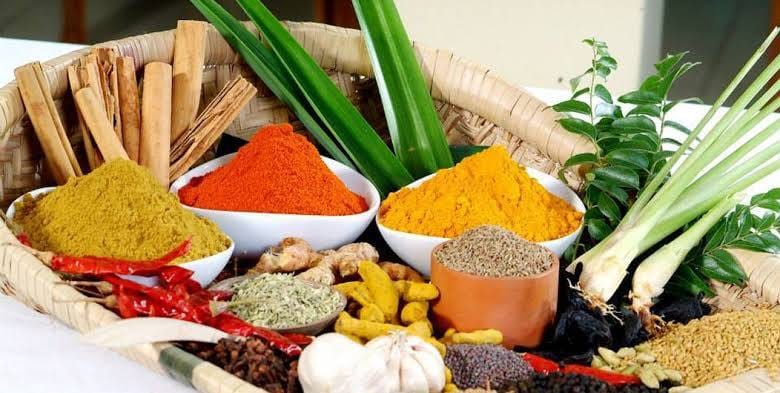Sri Lanka’s Spices: A Fragrant Journey Through the Island’s Aromatic Treasures
Sri Lanka’s spices have enchanted traders and chefs for centuries, turning simple dishes into unforgettable feasts.

The Scent of Sri Lanka’s Soul
Step into a world where the air is perfumed with warm, exotic aromas—cinnamon, cardamom, pepper, cloves, and more. Sri Lanka’s spices have enchanted traders and chefs for centuries, turning simple dishes into unforgettable feasts. This island’s spice heritage is a journey of flavor, culture, and tradition you’ll want to taste firsthand.
Cinnamon: The Sweet Heart of Sri Lanka
Sri Lankan cinnamon (Cinnamomum verum) is soft, sweet, and complex—far gentler than its cassia cousins. Its delicate bark curls into quills that release warm, citrusy notes essential to both sweet and savory dishes.
Where to find it: Southern coast plantations near Matara and Galle offer tours where you can see cinnamon peeling and sample fresh sticks.
Pro tip: Use fresh cinnamon sticks in slow-cooked curries or herbal teas to unlock their full aroma and health benefits.
Black Pepper: The King of Spice
Sri Lanka’s wild black peppercorns are small but pack a powerful punch. Known as “the king of spices,” pepper adds heat and depth to curries, stews, and even desserts.
Where to find it: Pepper vines thrive in the wet zone hill country, with local farms near Kandy and Nuwara Eliya offering fresh pepper for sale.
Pro tip: Freshly cracked peppercorns elevate any dish. Try sprinkling just before serving to preserve the pungent aroma.
Cardamom: The Aromatic Jewel
Cardamom pods from Sri Lanka’s central highlands are prized for their floral, citrusy fragrance and sweet-spicy taste. Used in everything from tea to curries and desserts, cardamom adds a luxurious note.
Where to find it: Visit tea estates in the hill country where cardamom is often grown alongside tea bushes.
Pro tip: Lightly crush pods to release aroma; add early in cooking for savory dishes and later for teas and sweets.
Cloves: The Warmth of Tradition
Cloves bring a deep, woody warmth with a hint of sweetness and bitterness. In Sri Lanka, they’re essential in curry powders and spiced desserts, as well as aromatic oils used in Ayurveda.
Where to find it: Clove trees flourish in the humid wet zone forests; specialty spice shops in Colombo carry fresh cloves year-round.
Pro tip: Use whole cloves in slow-cooked dishes or ground cloves sparingly for a balanced spice profile.
Fenugreek: The Bitter-Sweet Secret
Though less known abroad, fenugreek seeds are fundamental in Sri Lankan cooking for their slightly bitter, nutty flavour. They add depth to sambols, pickles, and curry bases.
Where to find it: Available at local spice markets and dry goods shops across Sri Lanka.
Pro tip: Toast fenugreek seeds lightly before grinding to mellow bitterness and boost aroma.
Mustard Seeds: The Tiny Flavour Bombs
Black mustard seeds add a sharp, pungent kick and are often tempered in hot oil at the start of cooking, releasing a nutty, spicy fragrance unique to Sri Lankan dishes.
Where to find it: Widely available in all markets and grocery stores across the island.
Pro tip: Don’t skip the tempering—popping mustard seeds in oil is the secret to authentic flavour.
Cumin: Earthy and Warm
Cumin seeds lend a warm, earthy flavour that forms the backbone of many Sri Lankan curry powders and spice blends. It balances heat with a subtle bitterness.
Where to find it: Sold in spice markets across the country, especially in Colombo’s Pettah Market.
Pro tip: Lightly roast cumin seeds before grinding to release deeper flavour notes.
Curry Leaves: The Fragrant Leafy Herb
Not a spice but a key aromatic, fresh curry leaves impart a bright, citrusy aroma that elevates countless Sri Lankan dishes. They’re usually tempered in oil to release their fragrance.
Where to find it: Fresh curry leaves grow widely and are sold fresh in markets and grocery stores.
Pro tip: Always add fresh curry leaves early in the tempering process to fully infuse their flavour.
Tamarind: The Tangy Spice
Tamarind pods and paste add a sharp, sour note that balances spicy and sweet flavours in many dishes like sambols and fish curries.
Where to find it: Widely available fresh or as paste in markets throughout Sri Lanka.
Pro tip: Soak tamarind pulp in warm water and strain before adding to dishes to avoid any gritty texture.
When and How to Enjoy
Sri Lanka’s spices are harvested year-round, but the best time to visit spice plantations is during dry seasons (December to March). Freshly harvested spices have the most potent aroma and flavour—sampling them onsite is an unforgettable experience.
Why Visit Sri Lanka for Its Spices?
More than just ingredients, Sri Lanka’s spices tell stories of ancient trade routes, colonial history, and traditional healing. Walking through a cinnamon plantation or smelling freshly ground cardamom at a local market connects you to centuries of culture and craft. For food lovers and curious travelers, tasting Sri Lanka’s spices where they grow is a sensory adventure you won’t forget.





